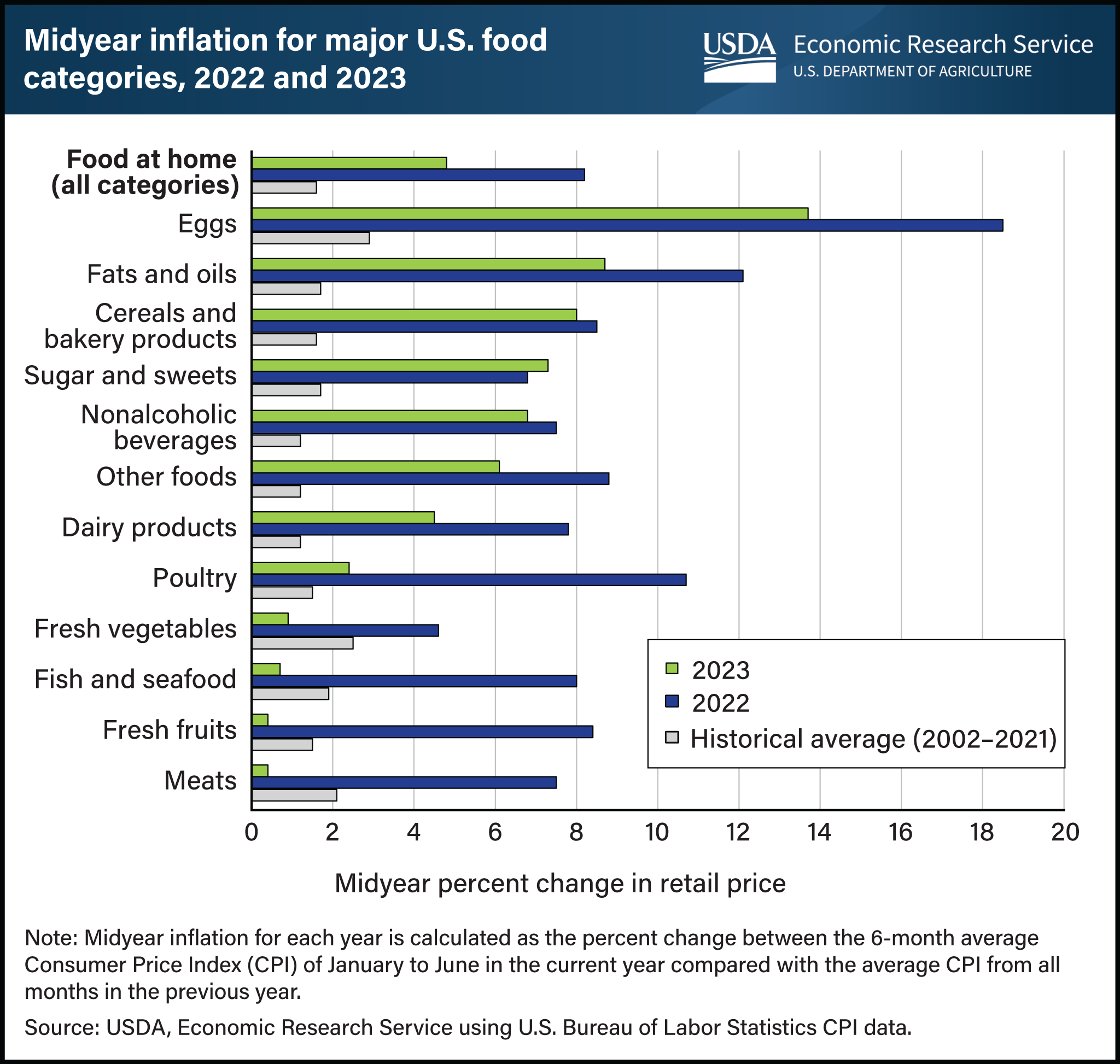Most food categories experienced lower midyear inflation in 2023 compared with 2022
- by Megan Sweitzer
- 7/26/2023

Retail food prices increased 4.8 percent in the first 6 months of 2023, lower than the rate of midyear inflation in 2022 (8.2 percent). The 20-year average for midyear inflation from 2002 to 2021 was 1.6 percent. All food categories except for sugar and sweets experienced smaller price increases through the first half of 2023 compared with the same period in 2022. Prices for eggs increased the most (13.7 percent) so far in 2023, followed by fats and oils (8.7 percent), and cereals and bakery products (8.0 percent). All food categories increased in price in the first 6 months of 2023 compared with 2022, but the increases for meats (0.4 percent), fresh fruits (0.4 percent), fish and seafood (0.7 percent), and fresh vegetables (0.9 percent) were below their historical average price increases. Inflationary pressures and trends differ by food category. For example, egg prices reached historically high levels early in 2023 because of an outbreak of highly pathogenic avian influenza (HPAI), though prices have since fallen from their peak. Prices will continue to change during the remainder of 2023 and may affect the annual inflation rate. The USDA, Economic Research Service (ERS) Food Price Outlook projects food-at-home prices will increase 4.9 percent in 2023, with a prediction interval of 3.7 to 6.1 percent, and was last updated July 25, 2023.

